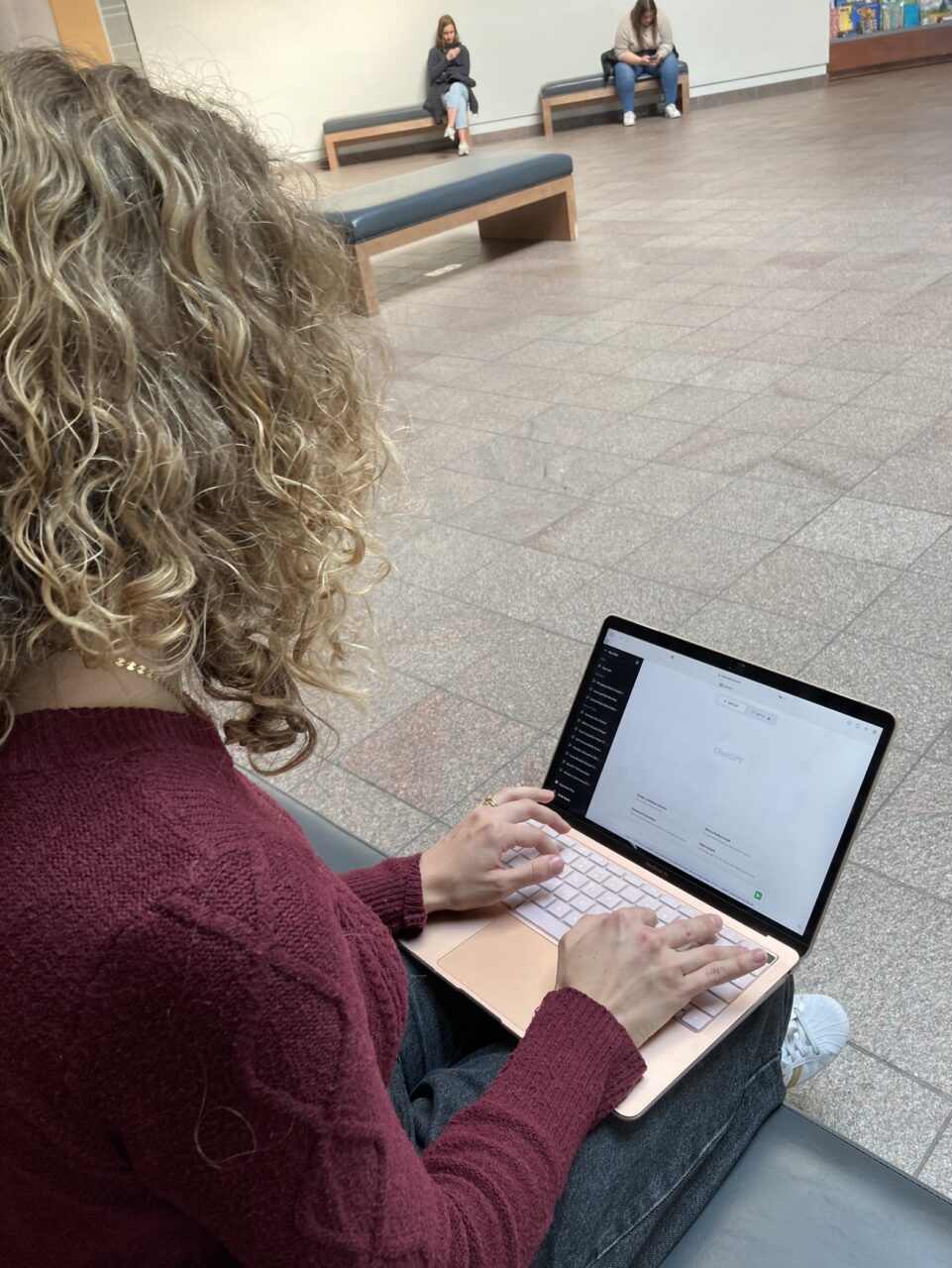
One BYU professor is using AI in unprecedented ways in his classroom this semester.
Since the popularization of ChatGPT and other forms of generative AI early this year, reactions to the software have been mixed, especially in education. Some view AI as the future and are jumping on board to use it, while others view AI as detrimental to creativity and original thought.
BYU communications professor Robert Walz falls into the former camp. He has rewritten his classes this year to heavily rely on the use of AI to teach writing and visual communications to public relations students. According to Walz, over the 14 weeks of his public relations writing class this semester, students will write about 200 articles using AI — an unprecedented number, as previously, students created somewhere around five to seven pieces.
According to Walz, in years past, the PR writing class has focused on teaching grammar, punctuation, spelling and AP style rules. These are all things that AI can now do automatically. So, instead of focusing on writing their own articles and learning the basics, the students are learning how to write good prompts and edit the articles AI writes for them.
“There’s no reason to waste your time doing that stuff anymore …” Walz said. “Writing with ChatGPT makes you a better writer than you could normally be. It expands your ability to do things.”
Emily Hooke, a junior in Walz’s PR writing class, explained the class has shown her how AI can reduce some of the busy work of writing and allow students to focus on ideas.
“(Walz) is really encouraging us to dive headfirst into this platform, and find how it can maximize our writing in any aspect of creating a media brief … It has been neat to see AI’s power in making those things go faster,” Hooke said.
Walz said knowing how to use artificial intelligence is an important skill because people in the workforce who do not know how to use it will be replaced by those who do. Of course, he continued, there are some things AI cannot replace — such as face-to-face interviews — but technology and the workforce are changing, and people should embrace it.
Initially, Walz said some of his students were skeptical about the use of AI in the classroom and nervous about the ethics of relying on artificial intelligence.
For Lauren Felker, a senior enrolled in Walz’s writing class and visual communications class, there were mixed feelings about the classes at first.
“It was kind of frustrating in the beginning,” Felker said. “It’s been a trial period for all of us … I feel like we’re getting to a point where like, it’s kind of turning into a really good experience.”
Hooke was excited to hear about the AI elements being added to the class. She explained attending a public relations conference in Nashville showed her how unique it was to be using AI this much in a classroom.
“It was just really eye-opening to see how cutting edge we are to be discussing these things in such a formal classroom setting where many other public relations programs and other fields of study have hardly touched on it at all,” Hooke said.
In Walz’s visual communications class, students are using DALL·E 2, Bing Image Creator, and Midjourney to create images for clients. They study the five periods of art in world history and create pieces of art based on different styles.
Walz disagrees with some professors who might say they need to teach their students to write better than ChatGPT. According to him, students need to learn to use the tools to stay relevant professionally. His experience in the professional world before his teaching career has motivated his use of AI as his contacts in the industry are figuring out how to use ChatGPT.
“So my recommendation for college students is when you see a new innovation, embrace it, get to know it as well as you can and find a way that you can use it to make you more efficient at your job. “
Of course, as Walz and Hooke both pointed out, AI is not perfect.
“It gets things wrong. And you still need to know how to look for that. And I think that’s an area we’re working on in a class to find that good balance,” Hooke said.
Felker said she appreciates the greater emphasis on storytelling in the class and is grateful for what she is learning.
“I think that (artificial intelligence is) the future and so I’m really grateful to learn in the classroom because we’re going to need it. We’re going to need to know how to use it,” Felker said.
Walz shared he will probably retire in the next five years or so but using AI has given him “new life.”
“It’s so exciting to me,” Walz said.
Walz expressed he is excited about being able to focus more on storytelling in his writing class. Since the class is an entry level class, he has previously been unable to focus on a higher level of writing because of time constraints. Now, he said he has extra time to focus on creating stories that will resonate with an audience and inform them or change their thought process.
“My premise is that this experience will make them better writers than the way we did it before, that this exposure to writing 200 different articles will make them a better writer than if we just wrote three or four articles,” Walz said.
Walz said his students wrote an original piece at the beginning of the semester and will revisit it at the end to refine it and apply what they have learned from creating their 200 articles with AI.




